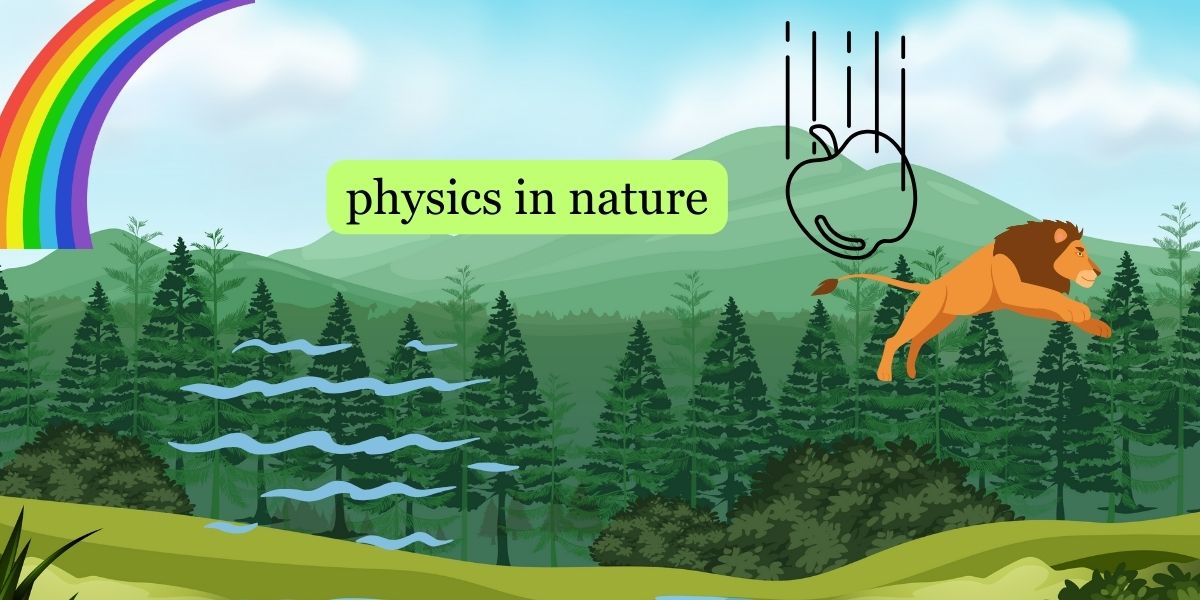Physics is a fundamental science that helps us understand the natural world and its phenomena. Here are some examples of physics principles in nature:
- Gravity and Falling Objects:
- Newton’s law of gravity explains why objects fall to the ground when dropped. This principle is evident in everything from a falling leaf to a raindrop.
- Projectile Motion of a Jumping Animal:
- When animals jump, they follow a projectile motion trajectory. This can be observed in the jumps of various animals, such as a frog leaping or a squirrel jumping between branches.
- Waves in the Ocean:
- Ocean waves demonstrate principles of wave motion. Waves transport energy across the water’s surface, and their behavior can be described using wave equations.
- Electromagnetic Spectrum in Sunlight:
- Sunlight is composed of electromagnetic waves across the spectrum, from radio waves to gamma rays. Plants use the visible light portion of the spectrum for photosynthesis.
- Rainbows and Dispersion:
- Rainbows are a result of the dispersion of light, where sunlight is refracted, dispersed, and internally reflected in raindrops, creating a spectrum of colors.
- Magnetic Fields in Earth:
- Earth itself acts as a giant magnet with a magnetic field. This field is essential for various natural processes, including the migration patterns of birds and the behavior of compass needles.
- Sound Waves in Nature:
- Animals use sound waves for communication, navigation, and hunting. Examples include the calls of whales, chirping of crickets, and songs of birds.
- Buoyancy in Floating Objects:
- Archimedes’ principle explains why objects float or sink in fluids. This principle is evident in the buoyancy of boats, floating leaves, and the behavior of fish.
- Thermodynamics in Weather Patterns:
- The movement of air masses, the formation of clouds, and the occurrence of weather phenomena are influenced by thermodynamics, the study of heat and energy transfer.
- Conservation of Energy in Ecosystems:
- Ecosystems follow the laws of conservation of energy. Energy flows through food chains, from producers to consumers, and energy is neither created nor destroyed but transferred within the system.
- Centripetal Force in Planetary Orbits:
- Planets orbit the sun due to the centripetal force generated by the gravitational pull of the sun. This motion obeys Newton’s laws of motion and gravitation.
- Elasticity in Plant Growth:
- Plants exhibit elasticity in their stems, allowing them to bend and flex in response to wind or external forces. This property helps them adapt to their environment.
These examples demonstrate how physics concepts are woven into the fabric of the natural world, shaping the behaviors and interactions of various elements in the environment. Understanding these principles enhances our comprehension of the world around us.


No responses yet